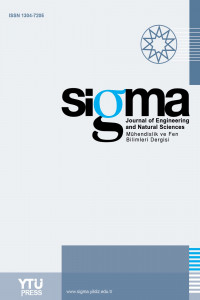Abstract
Compressive Sensing (CS), which makes it possible to reduce the amount of data and thereby greatly simplify the sensor system has become a very important research area. In this method, data is compressed before measurements whereas data is first measured and then compressed in the current technology. This approach leads to reducing the number of sensors. In this study, simultaneous compressive sensing and optical cryptography is developed as a new approach for encryption and decryption of signals and images. In the current work, CS is achieved with the orthogonal matching pursuit (OMP) algorithm. Then, the CS-OMP algorithm is combined with the double random phase/amplitude encyrption (DRPAE) method to achieve both compression and encyrption of data. In order to achieve high security, the keys used in DRPAE are transmitted to the receiver by an asymmetric cryptography method, such as the RSA method. Thus, the overall cryptographic system is a hybrid optical system (both symmetric and asymmetric) since DRPAE is a symmetric optical encyrption method. In this approach, the use of the detection matrix in CS also protects DRPAE phase/amplitude keys against well-known attacks which no longer function. The data size is also decreased.
Keywords
Compressive sensing orthogonal matching pursuit optical cryptography symmetric cryptography asymmetric cryptography fourier related transforms double random phase/amplitude optical key encryption data compression sensor reduction
References
- [1] Candes E., “Compressive sampling”, International Congress of Mathematicians (ICM), vol. 3, pp. 1433–1452, 2006. Madrid, Spain.
- [2] Foucart S., Rauhut H., “Mathematical Introduction to Compressive Sensing”, 2013, Springer New York Heidelberg Dordrecht London, ISBN 978-0-8176-4947-0
- [3] http://users.ece.gatech.edu/_justin/ssp2007.
- [4] Gilbert A., Indyk P., “Sparse recovery using sparse matrices”, Proceedings of the IEEE, Vol. 98, No. 6, pp. 937–947, 2010.
- [5] Donoho D., “Compressed Sensing”, IEEE Tran. Information Theory, 52(4), pp. 1289 - 1306, April 2006.
- [6] Shannon C. E., “Communication in the Presence of Noise”, Proc. Institute of Radio Engineers, Vol. 37, pp. 10–21, 1949.
- [7] http://infonet.gist.ac.kr/. http://infonet.gist.ac.kr/.
- [8] Baraniuk R., “Compressive sensing”, IEEE Signal Processing Magazine, 24(4), pp. 118-121, July 2007.
- [9] Baron D., Wakin M. B., Duarte M. F., Sarvotham S., Baraniuk R. G., “Distributed Compressed Sensing”, Tech. Rep. TREE-0612, Rice University, Department of Electrical and Computer Engineering, 2006.
- [10] Amir M. A, Esther R., “Compressive Sensing: From Compressing while Sampling to Compressing and Securing while Sampling”, 32nd Annual International Conference of the IEEE EMBS, Buenos Aires, Argentina, August 31 - September 4, 2010.
- [11] Minal C., Rajankar S., “Study the Effects of Encryption on Compressive Sensed Data” International Journal of Engineering and Advanced Technology (IJEAT) ISSN: 2249 – 8958, Volume-2, Issue-5, June 2013.
- [12] Rachlin Y., Baron D., “The Secrecy of Compressed Sensing Measurements”, Communication, Control, and Computing, 2008 46th Annual Allerton Conference, 813 – 817, Urbana-Champaign, IL.
- [13] Work F., McSherry M., Talwar K., “The Price of Privacy and the Limits of LP Decoding”, Symp. on Theory of Computing (STOC), June 2007.
- [14] Örsdemir A., Altun H. O., Sharma G., “On the Security and Robustness of Encryption via Compressed Sensing”, Proceedings of the IEEE military communications conference MILCOM, 2008.
- [15] Ramezani M.,Seyfe B.,Bafghi H.G., “Perfect Secrecy via Compressed Sensing”, Communication and Information Theory (IWCIT), Iran Workshop on, 8-9 May 2013, Tehran, 1-5, 2013.
- [16] Zhang Y., Wong K., Xiao D., Zhang L.Y., Li M., “Embedding Cryptographic Features in Compressive Sensing”, Cryptography and Security, Information Theory, arXiv:1403.6213.
- [17] Zhang X., Ren Y., Feng G., Qian Z., “Compressing Encrypted Image Using Compressive Sensing”, Intelligent Information Hiding and Multimedia Signal Processing (IIH-MSP), 2011 Seventh International Conference, 222 – 225, Dalian, 14-16 Oct. 2011.
- [18] Mo Y., Zhang A., Zheng F., Zhou N., “An Image Compression-Encryption Algorithm Based on 2-D Compressive Sensing”, Journal of Computational Information Systems 9: 24, 10057-10064, 2013.
- [19] Donoho D., Chen S., Saunders M., “Atomic Decomposition by Basis Pursuit”, SIAM Journal on Scientific Computing, Vol. 20 p.33-61, 1998.
- [20] Tropp J., Gilbert A.C., “Signal Recovery from Partial Information via Orthogonal Matching Pursuit”, IEEE Trans. Inform. Theory, Vol. 53, No. 12, p. 4655-4666, 2007.
- [21] Ersoy O., Nouira A., “Image Coding with the Discrete Cosine-III Transform”, IEEE Journal On Selected Areas in Communıcations, Vol. 10. No. 5, June 1992.
- [22] Schneier B., Applied Cryptography - Protocols, Algorithms, and Source code in C, John Wiley&Sons, Inc., 2nd edition, 1996.
- [23] Washington L. C., 2003, Elliptic Curves, NumberTheory and Cryptography, Chapman&Hall/Crc.
- [24] Menezes A. J., Handbook of Applied Cryptography, Boca Raton: CRC Press, 1997.
- [25] RivestR., Shamir A., Adleman L. A., “Method for Obtaining Digital Signatures and Public-Key Crypto Systems”, Communications of the ACM, 21 (2), 120-126, 1978.
- [26] Peng X., Zhang P., Wei H., “Known-Plain Text Attack on Optical Encryption Based on Double Random Phase Keys”, Optics Letters, Vol. 31, No. 8, April 15, 2006.
- [27] Peng X., Wei H.,Zhang P., “Chosen Plaintext Attack on Lensless Double Random Phase Encoding in the Fresnel Domain”, Optics Letters, Vol. 31, No. 22, November 15, 2006.
- [28] Carnicer A.,Usategui M., Arcos S., Juvells I., “Vulnerability to Chosen Ciphertext Attacks of Optical Encryption Schemes Based on Double Random Phase Keys”,Optics Letters, Vol. 30, No. 13,July 1, 2005.
- [29] Frauel Y., Castro A., Naughton T., Javidi B., “Resistance of the Double Random Phase Encryption against Various Attacks”, Optics Express, Vol. 15, No. 16, 6 August 2007.
- [30] Atar E., Ersoy O., Özyılmaz L., “Hybrid Data Compression and Optical Cryptography with Orthogonal Matching Pursuit”, Journal of theFaculty of Engineering and Architecture of Gazi University, 32:1 (2017) 139-147, 2017.
Details
| Primary Language | English |
|---|---|
| Subjects | Engineering |
| Journal Section | Research Articles |
| Authors | |
| Publication Date | March 1, 2018 |
| Submission Date | July 19, 2017 |
| Published in Issue | Year 2018 Volume: 36 Issue: 1 |
IMPORTANT NOTE: JOURNAL SUBMISSION LINK https://eds.yildiz.edu.tr/sigma/


